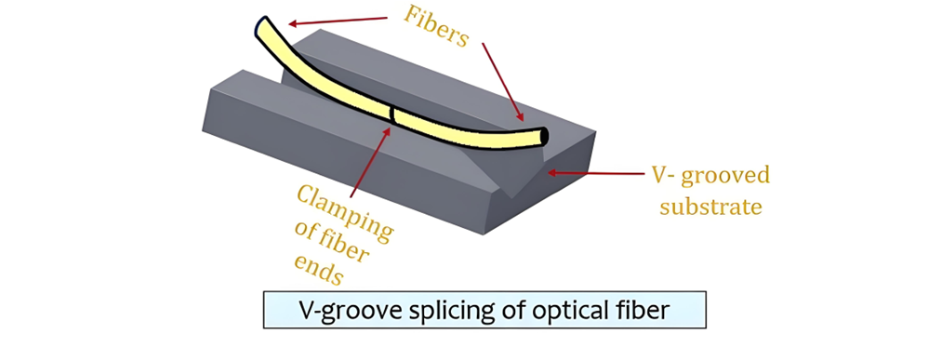Definition: Optical fiber splicing is a technique employed to connect two optical fibers. In the realm of optical fiber communication, this technique is utilized to create long optical links, facilitating superior and long - distance optical signal transmission. Splicers are essentially couplers that establish a connection between two fibers or fiber bundles. When splicing two optical fibers, factors such as the fiber geometry, proper alignment, and mechanical strength must be considered.
Optical Fiber Splicing Techniques
There are mainly three techniques for splicing optical fibers, which are as follows:
Fusion Splicing
Fusion splicing is a technique that creates a permanent (long - lasting) connection between two optical fibers. In this process, the two fibers are joined thermally. An electrical instrument, which functions as an electric arc, is essential for establishing this thermal connection.
First, the two fibers are precisely aligned and butted together within a fiber holder. Once the alignment is complete, the electric arc is activated. When switched on, it generates energy that heats the butt - joint. This heating melts the ends of the fibers, allowing them to bond together.
After the fibers have bonded, their junction is protected by covering it with either a polyethylene jacket or a plastic coating. The following figure illustrates the fusion splicing of an optical fiber:
Using the fusion splicing technique, the losses generated at the splice are extremely low. For both single - mode and multimode optical fibers, the loss range is between 0.05 to 0.10 dB. A technique with such minimal losses is highly practical and useful, as only a negligible portion of the transmitted power is lost.
However, during fusion splicing, the heat supply must be carefully regulated. This is because excessive heat can sometimes result in a fragile (delicate) joint.
Mechanical Splicing
Mechanical splicing encompasses the following two categories:
V - Grooved Splicing
In this splicing technique, a V - shaped substrate is first selected. The ends of the two optical fibers are then butted within the groove. Once the fibers are properly aligned in the groove, they are bonded together using an adhesive or index - matching gel, which secures the connection.The V - substrate can be made from plastic, silicon, ceramic, or metal.The following figure illustrates the V - groove optical fiber splicing technique:

However, this technique incurs higher fiber losses compared to fusion splicing. These losses primarily depend on the core and cladding diameters, as well as the core's positional alignment relative to the center.
Notably, the two fibers do not form a continuous, smooth connection as seen in the previously discussed method, and the joint is semi-permanent.
Elastic-Tube Splicing
This technique utilizes an elastic tube for fiber splicing, predominantly applied to multimode optical fibers. Fiber loss here is nearly comparable to that of fusion splicing, but requires less equipment and technical skill than fusion splicing.The following figure illustrates the elastic-tube splicing technique:

The elastic material is typically rubber, featuring a small hole with a diameter slightly smaller than that of the fiber to be spliced. Both fiber ends are tapered to facilitate easy insertion into the tube. When a fiber with a diameter slightly larger than the hole is inserted, the elastic material exerts symmetric force, expanding to accommodate the fiber. This symmetry ensures precise alignment between the two fibers. The technique allows splicing fibers of different diameters, as the fibers self - align along the tube's axis.
Advantages of Fiber Splicing
- Enables long - distance optical signal transmission.
- Minimizes reflection during signal transmission.
- Provides nearly permanent fiber connections.
Disadvantages of Fiber Splicing
- Fiber losses can occasionally exceed acceptable thresholds.
- Increases the overall cost of optical fiber communication systems.
- Splicing yields permanent or semi - permanent joints. For temporary connections, optical fiber connectors are used to join two fibers transiently.